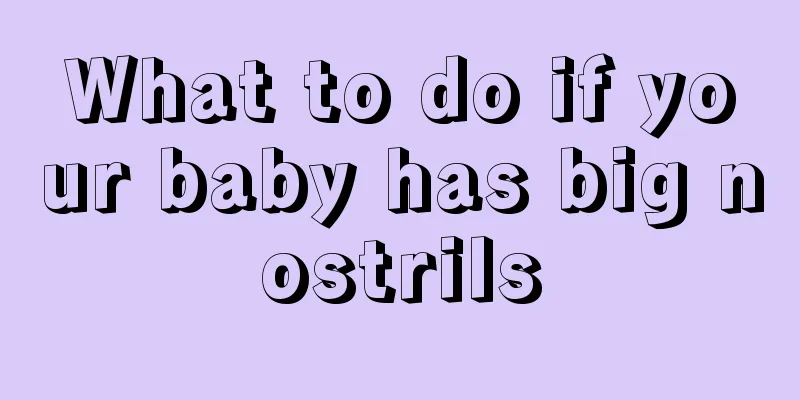Baby's eyes have red bloodshot

|
Newborns often bleed after the umbilical cord falls off. If the amount of bleeding is not much and only a little blood is seeping out, there is no need to worry too much. Just use alcohol to clean it and then wrap it well with gauze. However, if the bleeding is severe, parents need to take their children to the hospital for examination and treatment in time, and never delay the treatment. 1. Causes of bleeding in the navel of newborns Within 1 week to 1 month after the umbilical cord falls off, if the newborn coughs or cries hard, causing the intra-abdominal pressure to increase, the blood vessels in the remaining end of the umbilical cord will open slightly, resulting in a small amount of bleeding. The reason is that after the umbilical cord is cut off, the blood vessels in the umbilical cord are only closed functionally, but are still not closed anatomically, and are a potential channel. Once the child's abdominal pressure increases, there will be a small amount of bleeding in the umbilical cord, which will appear as a little brown or bright red blood stains on the newborn's clothes. Parents do not need to panic at this time. First, use 75% alcohol to gently wipe off the blood on the navel, and then bandage it with sterilized gauze. Do not use unsterilized water or cloth to clean or fill the belly button to stop bleeding, so as to avoid umbilical infection. 2. Examination of neonatal umbilical bleeding The mother should first observe whether there is redness or swelling around the baby's navel. If there is just a little bleeding, it is not a big problem. Sometimes it may be caused by improper care, because the friction of clothes or quilts may break the blood clot that has just formed on the belly button, causing umbilical bleeding. At this time, parents should take good care of the baby's belly button. The clothes and quilts for your baby must be soft. If the baby's navel bleeds, parents should use a clean cotton swab to wipe off the blood, and then bandage the navel with sterilized gauze. It will usually heal after a few days and there is no need to use hemostatic drugs, but you should pay attention to keeping the navel dry. 3. Neonatal umbilical cord care
1. Pay attention to waterproofing During the umbilical cord care process, parents should pay special attention to keeping the navel dry and not getting it wet by diapers or other items. If you find that the baby's umbilical cord cloth is wet, you should change it immediately. Do not touch or wipe the belly button with dirty hands or dirty cloth. Do not cover the navel with a diaper to avoid contaminating the navel wound with urine or feces. Especially when bathing, if the baby's umbilical cord is wet, you should first wipe it dry with a cotton swab and then provide care. Do not let your baby take a bath in the tub before the umbilical cord falls off. You can wash the upper body first, dry it, and then wash the lower body. 2. Pay attention to observation Within 24 hours after the umbilical cord is tied, parents should closely observe whether there is any bleeding. Some newborn babies may have a small amount of exudate or bleeding due to the loosening of the umbilical cord. If you find that the gauze covering the umbilical cord is stained with blood or soaked, you should immediately ask the doctor to disinfect and re-ligate it. 3. Pay attention to disinfection (1) After bathing every day, disinfect with 75% alcohol, wiping in a spiral shape from the center of the navel to the surrounding areas. Do not rub back and forth randomly to avoid bringing bacteria from the surrounding skin into the navel. (2) After the umbilical cord of a newborn baby falls off, there will be a layer of scab at the root. After the scab falls off, there will be moisture or rice soup-like liquid oozing out locally. At this time, parents can wipe it clean with a sterilized cotton swab dipped in 75% alcohol. Special circumstances: If granulation tissue, purulent secretions, redness, swelling, and a foul odor are found at the base of the navel, and the navel is red and swollen, it means that omphalitis has occurred and you should seek medical treatment as soon as possible to prevent the condition from worsening. |
<<: What to do if your child writes slowly
>>: Treatment of language disorders in children
Recommend
The disadvantages of children learning table tennis
In life, many people like to play table tennis, a...
Why do children's nails turn white?
Many adults always ignore the changes in children...
Why do girls develop lumps in their breasts?
When girls reach puberty, their breasts will deve...
What causes knee pain in children?
Many parents often hear their children complain a...
What should children eat after phimosis surgery?
If your baby is a boy, you must pay attention to ...
How to apply eyeshadow for children's performances
In fact, in daily life, it is best for children n...
The dangers of holding your baby upright
When a baby is born, everyone will be very happy ...
Can babies with constipation eat yam?
Yam is a food that can prolong life. Yam contains...
The baby's phlegm and dampness block the lungs, mainly because of it
It is very common for babies to have phlegm and d...
What tests are needed for night terrors
Night terrors are a common disease among children...
Introduction to healthy diet tips for primary school students
Nowadays, students' dietary health has attrac...
The child poked his ear with a cotton swab and it bled
Parents usually do not pay attention to take care...
How to carry out rehabilitation treatment for cerebral palsy in children
When children come into this world, they are expe...
Is it normal for a child to have a vision of 0.8?
We found that many people with vision problems ar...
Functions and indications of children's cough and phlegm oral liquid
I believe everyone is familiar with the Children&...









